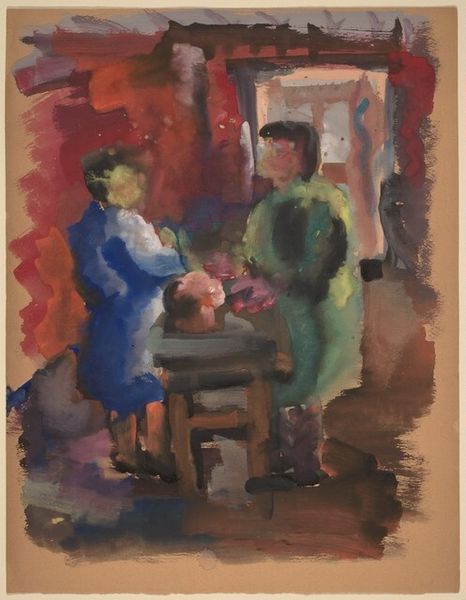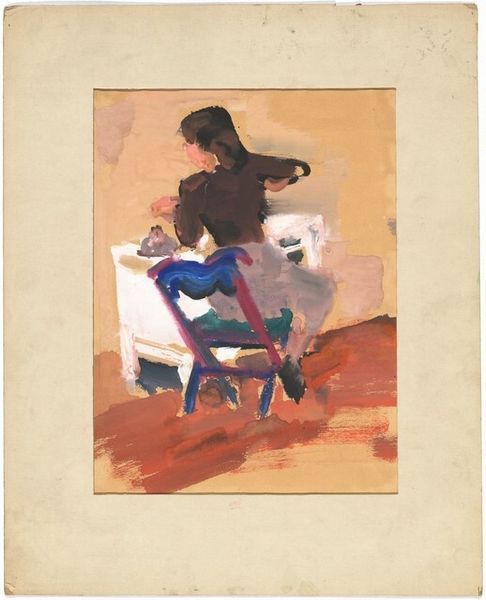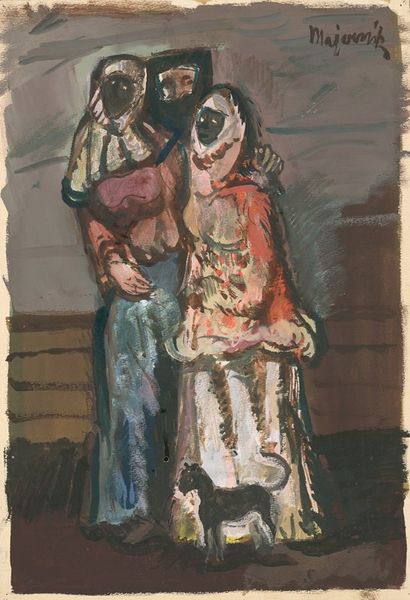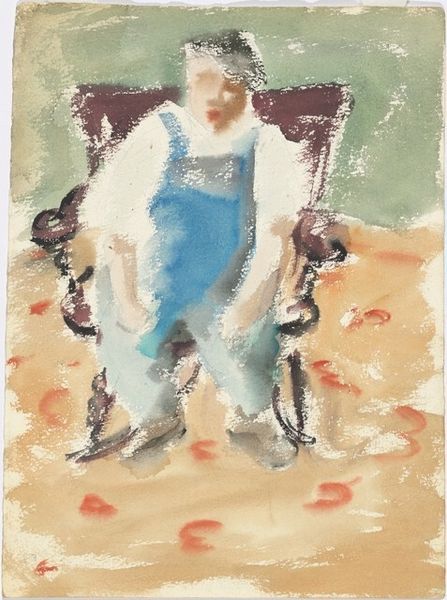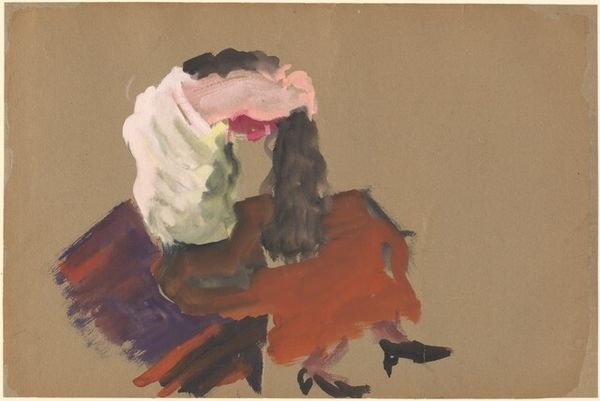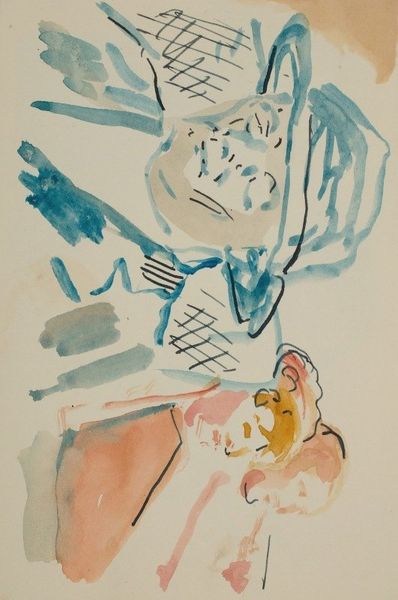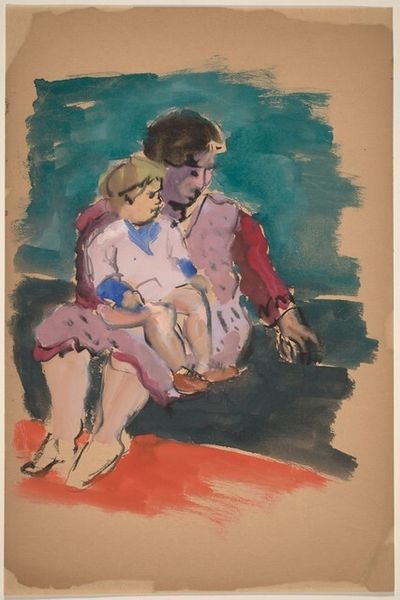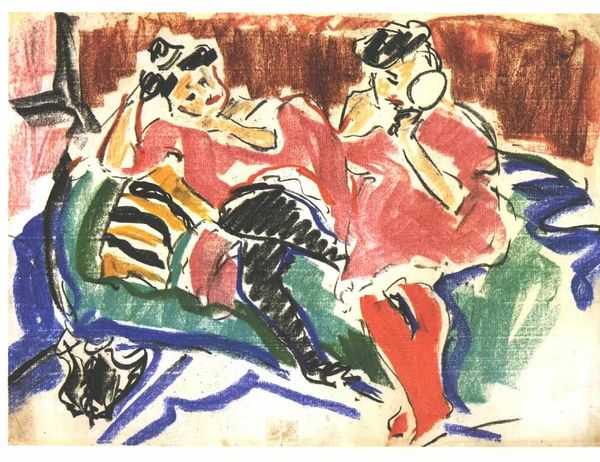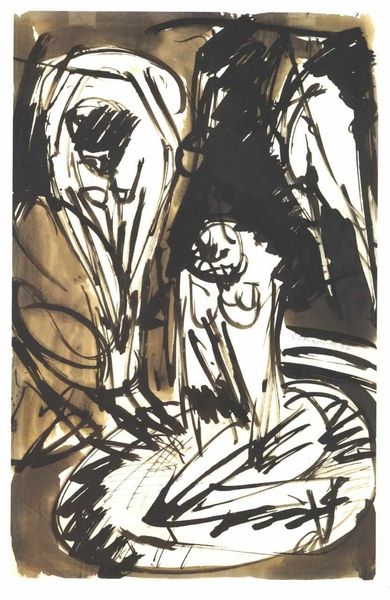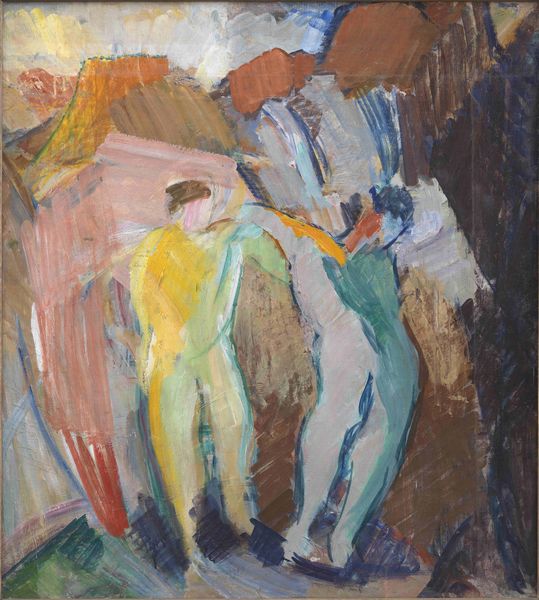
drawing, watercolor
#
portrait
#
drawing
#
impressionism
#
figuration
#
watercolor
#
modernism
#
watercolor
Copyright: National Gallery of Art: CC0 1.0
Curator: Mark Rothko, known later for his large abstract color fields, created this watercolor painting, "Two Seated Children." The date of its creation is not known, but it provides a fascinating glimpse into the artist's early explorations of form and emotion. What do you make of it? Editor: My first impression is how unfinished and fleeting it feels. The visible paper beneath the watercolor washes gives a sense of immediacy, as though Rothko captured a fleeting moment with these two children. Curator: Rothko came from a background of poverty. What do you think of how economic forces affected the choices he made in creating his artworks early in his career, considering that this particular piece may have been completed out of necessity instead of vision? Editor: The rawness you're pointing to—the thinness of the pigment, the visible paper—certainly speaks to an economy of means, but it is worth noting that a similar effect of the medium is visible across pieces by Rothko regardless of social class. His hand prioritizes the movement of the liquid over paper—he's actively interested in a watercolor look. Curator: Yes, you see an economy of expression too. It’s quite telling to consider the role of portraiture during the rise of modernism, isn't it? Commissioned works often served to reinforce societal norms and hierarchies. In which cases, artists chose less marketable subject matter, as Rothko does, allowing them to explore their own aesthetics outside traditional portraiture conventions. Editor: And in a way, Rothko's chosen materials, humble watercolors on paper, democratize the image itself. There's nothing ostentatious or inherently precious about these materials, making the figures feel accessible, even ordinary. You might even say they reflect Rothko's social views. Curator: Perhaps it's the opposite, with his shift later to abstraction, where color and form replaced recognizable figures to elicit profound emotional responses. It seems he was after transcendence beyond just "ordinariness." But do you notice in this painting a prelude to his later abstractions? The background, that almost dissolves around the figures... Editor: Yes! It reminds me how he was very attentive to the materiality of painting and the conditions of its making. He’s testing out the fluidity, transparency and even how the layering could evoke depth in non-perspectival terms, which clearly builds towards the color fields. Curator: So we witness in this modest watercolor the nascent vision of a giant of 20th-century art. Thank you for this stimulating material exploration, so helpful in understanding how society is often mirrored by the artist and in this case in very obvious ways! Editor: Thank you. It makes you wonder how his focus on his materials made him feel closer to these figures as a form of manual, emotional, labor.
Comments
No comments
Be the first to comment and join the conversation on the ultimate creative platform.

